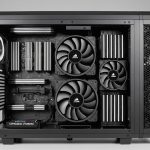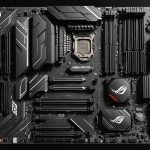Overview of Smart Plugs and Their Benefits
Smart plugs are a crucial component of modern smart home technology, offering an accessible way to control and automate various devices. They function by plugging into a standard electrical outlet, converting any ordinary appliance into a controllable smart device. This transformation is achieved through connectivity to a local Wi-Fi network, allowing remote control through linked devices such as smartphones or voice assistants.
One of the standout advantages of smart plugs is their contribution to energy efficiency. By enabling users to schedule device operations or set automatic shutoffs, smart plugs can significantly reduce unnecessary energy consumption, leading to lower energy bills and a reduced carbon footprint.
Beyond individual energy savings, smart plugs play a role in enhancing overall home automation. They serve as gateways to a more synchronized and efficient home environment, interacting seamlessly with other smart devices. Integrating smart plugs into a comprehensive smart home ecosystem allows users to tailor their smart home technology to suit their lifestyle, optimizing both convenience and energy usage.
Choosing the Right Smart Plug
When exploring compatible smart plugs, essential features must be considered to ensure optimal performance. Smart plug features such as Wi-Fi connectivity, energy monitoring, and voice assistant integration significantly enhance their utility. When examining selection criteria, it’s crucial to assess compatibility with existing smart home ecosystems and connectivity options, ensuring seamless integration and control.
Also to discover : Boosting Smart Home Security: Innovative Smartphone Integration Tactics You Need to Discover
A primary consideration for energy monitoring involves choosing smart plugs that provide real-time usage data, allowing you to track energy consumption and make informed decisions. Identifying smart plugs that support both scheduling and consumption tracking is beneficial for those focused on energy savings.
In the market, smart plug brands like TP-Link Kasa, Amazon Smart Plug, and Belkin Wemo are popular. Comparing these options based on functionality and compatibility can guide your choice. Some users might prioritise a brand’s app interface, while others focus on smart assistant compatibility.
Ultimately, selecting a smart plug involves balancing practicality with personal preferences. Assessing the pros and cons of various models will ensure you invest in a plug that aligns with your smart home needs and sustainability goals. This thoughtful selection can lead to enhanced efficiency and a more tailored smart home experience.
Integrating Smart Plugs with Smartphones
Seamless smart plug integration with smartphone apps allows for enhanced remote control of a smart home ecosystem. To begin, choose compatible apps that facilitate efficient management and control of your smart plugs. Many popular brands offer proprietary apps, many of which provide intuitive interfaces for ease of use.
Establishing a connection between smart plugs and smartphones is straightforward. Initially, ensure the smart plug is plugged in and powered on. Next, download the specific app associated with your smart plug brand. Follow the app’s instructions to connect the plug to your home’s Wi-Fi network. Once connected, the app will auto-detect the smart plug, allowing you to assign it a name and location for easy management.
Optimizing integration involves more than just simple connectivity. To enhance control, create custom schedules and automate device operations based on your daily routines. Use real-time notifications to stay informed on plug activity. Additionally, consider integrating voice assistants for hands-free control.
By effectively linking smart plugs with smartphones, users can achieve not only Convenience but substantial improvements in energy management and home automation efficiency. Connecting smart devices grants smoother operation when controlling and monitoring household appliances.
Practical Tips for Maximizing Energy Efficiency
Enhancing energy efficiency with smart plugs requires strategic usage and a proactive approach. Here are some energy-saving tips to help you get the most out of your smart plug investment.
Scheduling Devices for Optimal Use
Using smart plugs’ scheduling features, you can automate your appliances to operate only when needed. For example, setting lamps to turn off during daylight hours or programming holiday lights to switch off after a set time can significantly reduce energy waste. Implementing advanced smart plug control can further optimize these routines.
Utilizing Energy Monitoring Features
Smart plugs with energy monitoring capabilities present valuable insights. They enable users to track and analyse real-time power consumption, assisting in uncovering inefficiencies. This data-driven approach supports informed decisions to adjust usage habits, leading to reduced energy bills.
Real-life Energy Savings Examples
For instance, a household using smart plugs for major appliances, such as water heaters or entertainment systems, saw a 15% decrease in their monthly utility costs. Employing smart plug usage in everyday situations allows for practical applications of energy-saving tips and tangible financial benefits.
These practices, coupled with being mindful of device consumption, solidify smart plugs as not just a convenience but a viable solution for sustainable energy management.
Advanced Techniques for Smart Plug Control
Delving into advanced smart plug control, users can enhance their smart home’s automation techniques, creating an even more efficient living space. Setting up comprehensive automation routines through smart plugs involves leveraging smartphone automation tools to streamline everyday tasks. By programming routines like automated light dimming or synchronizing heating systems based on room occupancy, household processes become seamless.
Integrating smart plugs with other smart home devices amplifies their potential. For instance, connecting smart plugs with smart thermostats or security systems enhances overall functionality. This integration ensures devices work harmoniously, improving energy efficiency and automating household management.
However, encountering common issues is inevitable. Troubleshooting in advanced setups requires precise techniques. Ensure your Wi-Fi network is stable, as connectivity issues are common culprits. Also, confirm that firmware is up-to-date, as outdated versions frequently cause malfunctions. Adjusting settings within smart home apps can often resolve integration glitches.
These advanced techniques not only optimize your smart home ecosystem but also ensure a more cost-effective and efficient environment. By incorporating sophisticated automation methods and integrating devices, users can achieve higher levels of convenience, energy savings, and an enhanced living experience.
Potential Energy Savings and ROI
Analyzing potential energy savings with smart plugs involves assessing their contribution to reducing unnecessary energy consumption. Smart plugs provide users with control over appliance operation, making it easier to switch off devices remotely or on a schedule, ultimately decreasing standby power usage. This active management can lead to measurable reductions in home energy bills, demonstrating significant cost-effectiveness.
When calculating the return on investment (ROI) for smart plug applications, it’s important to consider factors like upfront costs, energy rate fluctuations, and the user’s energy habits. Typically, smart plugs pay for themselves over time, with their benefits extending to both financial savings and environmental impact.
Case studies provide concrete examples of achieved energy savings with smart plug technology. For instance, a family using smart plugs reported a 10% decrease in their annual electricity expenses due to better scheduling and control. This not only reflects financial gains but also a stride towards sustainable living.
By focusing on smart plug integration and proactive usage, households can experience a favourable cost-effectiveness ratio. Users not only conserve energy but also ensure a more sustainable home through these smart home adaptations.







